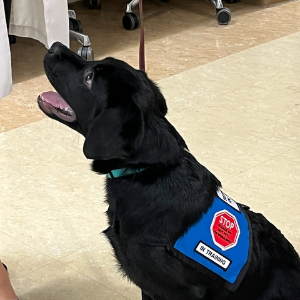As pet owners, we always strive to ensure our furry friends are happy and healthy. When it comes to seasonal allergies, our pets can experience discomfort just like we do. While it might seem challenging to communicate with your pet about their allergies, there are ways to better understand their symptoms and provide relief. In this blog, we’ll explore how the services of an animal communicator can help bridge the gap in understanding your pet’s allergies and provide much-needed relief.
Common Signs of Seasonal Allergies in Pets
Seasonal allergies, like grass and tree pollen, in pets can manifest in various ways, including sneezing, coughing, skin rashes, and sore paws. These symptoms are often visible to pet owners, and they can be treated with prescription medications prescribed by a veterinarian.
However, sometimes pets cannot fully express the depth of their discomfort. This is where an animal communicator can play a crucial role. They can help decipher your pet’s unspoken language and provide insight into the severity of their symptoms. For example, an animal communicator can uncover how much that rash itches or gauge how uncomfortable your pet feels when they sneeze.
Understanding Your Pet’s Non-Verbal Cues with an Animal Communicator
Animal communicators are trained to connect with pets through telepathic communication, enabling them to understand your pet’s thoughts and feelings through imagery. When your pet is experiencing discomfort due to allergies, an animal communicator can help you interpret their non-verbal cues more effectively:
1. Scratching or Chewing: Excessive scratching or chewing of their paws, ears, or other body parts can indicate itchiness or irritation caused by allergies. An animal communicator can provide insight into the intensity of your pet’s discomfort.
2. Licking: Continuous licking of specific areas may be an attempt to soothe irritated skin. An animal communicator can help you understand what areas bother your pet the most.
3. Rubbing Their Face: Pets with allergies may rub their face against furniture or carpets to relieve itching around their eyes and muzzle. An animal communicator can help you determine the extent of their discomfort.
4. Changes in Behavior: Noticeable changes in your pet’s behavior, such as restlessness, lethargy, or decreased appetite, could indicate discomfort from allergies. An animal communicator can delve into the emotional aspects of your pet’s response to allergies.
5. Sniffing and Sneezing: Frequent sniffing and sneezing, especially when outdoors, may suggest that your pet is reacting to outdoor allergens like pollen. An animal communicator can help you understand how your pet perceives these allergens.
Taking Steps to Reduce Allergen Exposure
While effective communication with your pet about allergies is enhanced with the help of an animal communicator, there are still practical steps you can take to reduce their exposure to allergens:
1. Keep Indoor Air Clean: Use air purifiers to filter out allergens like pollen and dust. Regularly clean and vacuum your home to reduce allergen buildup.
2. Limit Outdoor Time: During peak allergy seasons, try to limit your pet’s outdoor activities, especially in areas with high pollen counts.
3. Allergy-Appropriate Diet: Consult with your veterinarian about specialized diets that may help alleviate allergy symptoms, especially for pets with food sensitivities.
4. Regular Grooming: Regular grooming and bathing can help remove allergens from your pet’s fur and skin.
5. Consult Your Veterinarian: If you suspect your pet has allergies, consult your veterinarian for a proper diagnosis and treatment plan. They may prescribe medications or recommend allergy testing based on insights gained from an animal communicator.
While pets may not be able to verbally communicate their allergy symptoms, the services of an animal communicator can help bridge the gap in understanding. Pay attention to signs of discomfort and take proactive steps to reduce allergen exposure. If you suspect your pet is suffering from allergies, seek guidance from your veterinarian to ensure they receive the appropriate treatment and consider enlisting the help of an animal communicator to help monitor their symptoms and be sure they are enjoying a comfortable, allergy-free life. Remember, a happy and healthy pet is a cherished companion.




